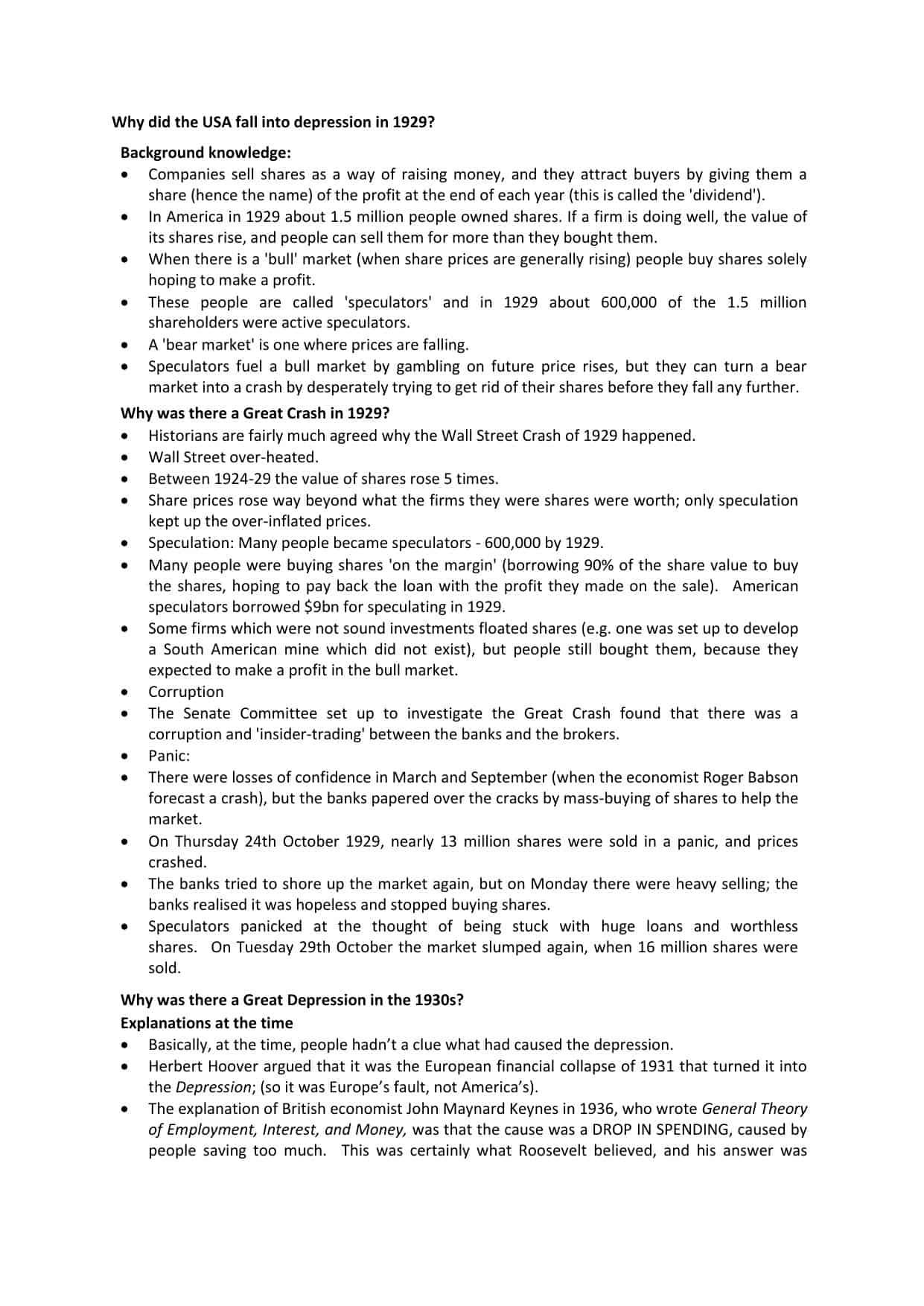Premium

Download Wall St Crash iGCSE Revision Notes
Click the button below to download this worksheet for use in the classroom or at home.
Download →
Why did the USA fall into depression in 1929?
Background knowledge:
- Companies sell shares as a way of raising money, and they attract buyers by giving them a share (hence the name) of the profit at the end of each year (this is called the ‘dividend’).
- In America in 1929 about 1.5 million people owned shares. If a firm is doing well, the value of its shares rise, and people can sell them for more than they bought them.
- When there is a ‘bull’ market (when share prices are generally rising) people buy shares solely hoping to make a profit.
- These people are called ‘speculators’ and in 1929 about 600,000 of the 1.5 million shareholders were active speculators.
- A ‘bear market’ is one where prices are falling.
- Speculators fuel a bull market by gambling on future price rises, but they can turn a bear
market into a crash by desperately trying to get rid of their shares before they fall any further. - Why was there a Great Crash in 1929?
- Historians are fairly much agreed why the Wall Street Crash of 1929 happened.
- Wall Street over-heated.
- Between 1924-29 the value of shares rose 5 times.
- Share prices rose way beyond what the firms they were shares were worth; only speculation
kept up the over-inflated prices. - Speculation: Many people became speculators – 600,000 by 1929.
- Many people were buying shares ‘on the margin’ (borrowing 90% of the share value to buy
the shares, hoping to pay back the loan with the profit they made on the sale). American
speculators borrowed $9bn for speculating in 1929. - Some firms which were not sound investments floated shares (e.g. one was set up to develop
a South American mine which did not exist), but people still bought them, because they
expected to make a profit in the bull market. - Corruption
- The Senate Committee set up to investigate the Great Crash found that there was a corruption and ‘insider-trading’ between the banks and the brokers.
- Panic:
- There were losses of confidence in March and September (when the economist Roger Babson
forecast a crash), but the banks papered over the cracks by mass-buying of shares to help the
market. - On Thursday 24th October 1929, nearly 13 million shares were sold in a panic, and prices
crashed. - The banks tried to shore up the market again, but on Monday there were heavy selling; the
banks realised it was hopeless and stopped buying shares. - Speculators panicked at the thought of being stuck with huge loans and worthless
shares. On Tuesday 29th October the market slumped again, when 16 million shares were sold.
Worksheet Task:
- Aimed at Students studying across AS/A2 or equivalent
- Premium resource
- Use as you wish in the classroom or home environment
- Lesson fact file on the Wall street crash and the Great depression.
- Includes challenging questions.
